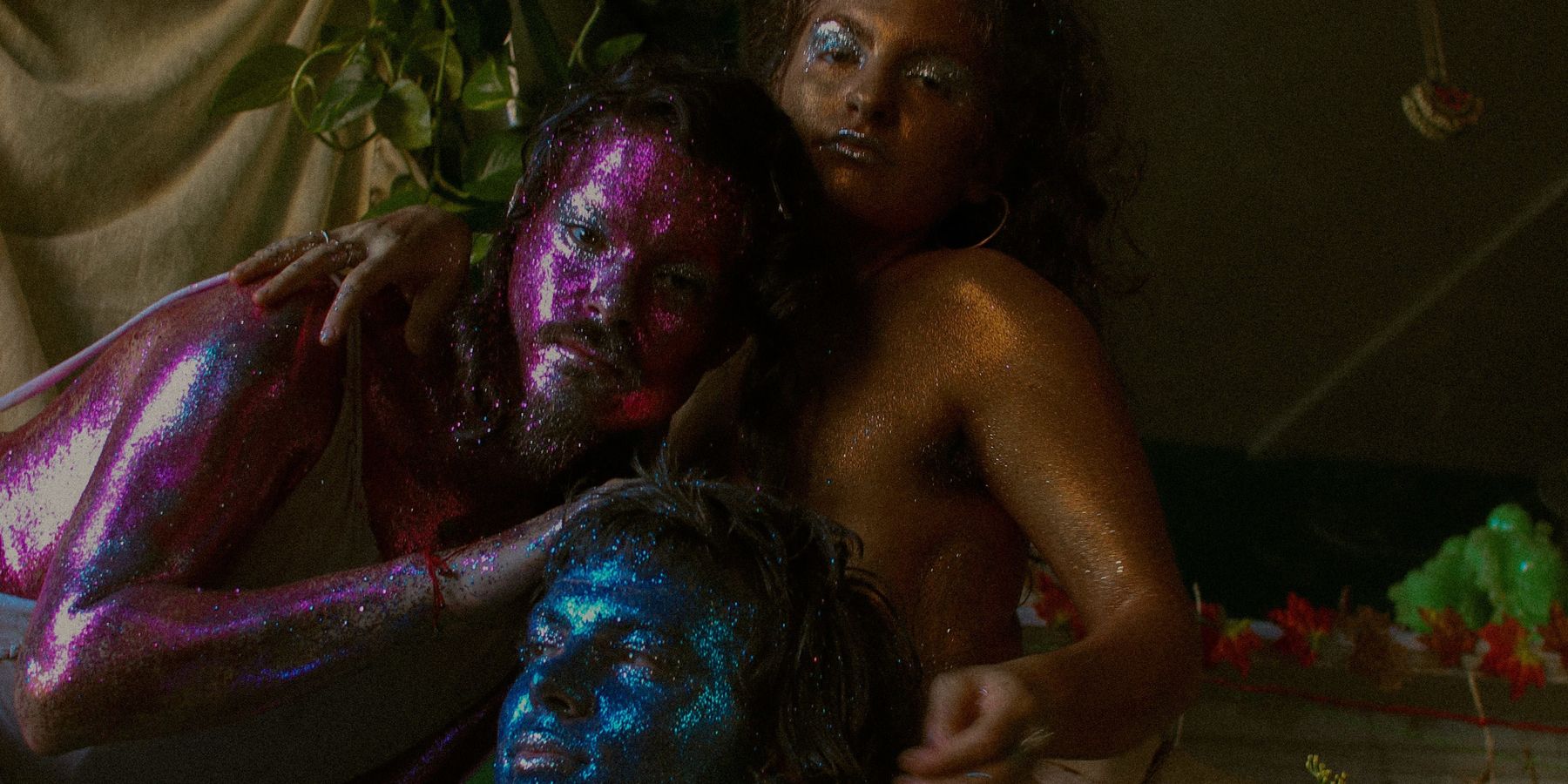
Sorry queers, sorry queens — scientists are warning us about the environmental impact of glitter, and some even argue it should be banned altogether. Created from microplastic, or plastic that's less than 5 millimeters long, glitter becomes an enticing, but deadly morsel of food for animals in the wild. Some estimate a total 51 trillion microplastic fragments have infiltrated the ocean, many of which come from glitter waste.
Related | The World According to RuPaul
BioGlitz, an independent brand formed in 2015 by Saba Gray alongside friend Rebecca Richards, aims to change the glitter industry and create a brighter, biodegradable future. While most craft glitter is produced using aluminum-coated petroleum, BioGlitz is made from eucalyptus cellulose — and because it's plant-based, the brand's glitter is lighter and less irritating to the skin.
We caught up with Richards to talk about the origins of BioGlitz, and how she hopes it will develop into an inclusive LGBTQ-friendly movement.
How did you and Saba first meet?
Rebecca Richards: Saba and I met at the Bushwick vintage shop Collections, where we instantly bonded over our mutual passion for extravagant self decor and ecofeminist values. I was a studying sustainable fashion at NYU Gallatin at the time, and she was working at Manufacture New York: a fashion incubator/factory hybrid created by Women's March co-founder Bob Bland.
What event kickstarted BioGlitz?
One night Saba and I met up to play dress up before hitting the town — as per usual — but this time she packed our small jars of glitter to share on the dance floor. We ended up at one of those warehouse raves where most people are wearing all black and bobbing their heads to dark techno.
As we started to offer glitz to anyone who complimented us on our shine, we felt the vibe of the room shift. People began to let their guards down, open up, and allow themselves to embrace the simple joy of glitter. Soon we had glitz'd dozens of strangers into new friends, and we watched as the party glowed. From then on, we wore glitter every day and brought it everywhere we went.
But just as we began to realize the beauty of this substance, we also realized the danger in it, as glitter is just micro-particles of plastic which we knew would never break down. The more we wore it, the more guilty we felt, and that gave Saba the genius idea to create a biodegradable glitter.
Related | 7 Social Superstars and Industry Tastemakers on the Power of Pride
What do you see as the biggest issue with the glitter industry?
Our biggest issue with the current glitter industry is how much waste it creates. Regular craft and cosmetic glitters are made of plastics derived from petroleum, mixed with aluminum, then cut into micro-particles making them impossible to recycle. This chemical glitter, like all other micro-plastics, inevitably ends up in our waterways and landfills, polluting our environment, poisoning our food supply, and heating our oceans. As passionate glitter-wearers & earth-dwellers, we knew we had to make a change.
What's the process for creating BioGlitz?
BioGlitz is made by transforming the cellulose of eucalyptus trees into rolls of plant-based plastic, which are then coated in .1 percent aluminum and cosmetic pigments. The 36-inch rolls are then sent through a precision cutter, and the pieces are caught in a net as they are sliced out. Using Forest Stewardship Council (FSC) certified plant-based ingredients, a tiny percentage of metalloids, and zero animal testing makes this formula 100 percent biodegradable, compostable, and guilt-free.
You've said BioGlitz is "more than glitter." What impact do you hope this will have as a larger movement?
BioGlitz is a step towards our dream future free of all plastic, divested from fossil fuels, and completely committed to the health of our planet. Every time we bring BioGlitz to an event, multiple people admit they had no idea glitter was made of plastic. One of our goals is to inspire people to ask how all things are produced, what resources are used in their production, and at what cost? We believe that if more people start asking these questions, more people will be inspired to create sustainable alternatives. Along with encouraging further consideration of nature, we also hope to encourage mindfulness in all aspects of life.
Photography: Dylan Thomas
Creative Direction: Rebecca Richards and Elce Shawe
Models: Mantra, Yera, and Slater
Clothing: ELCE